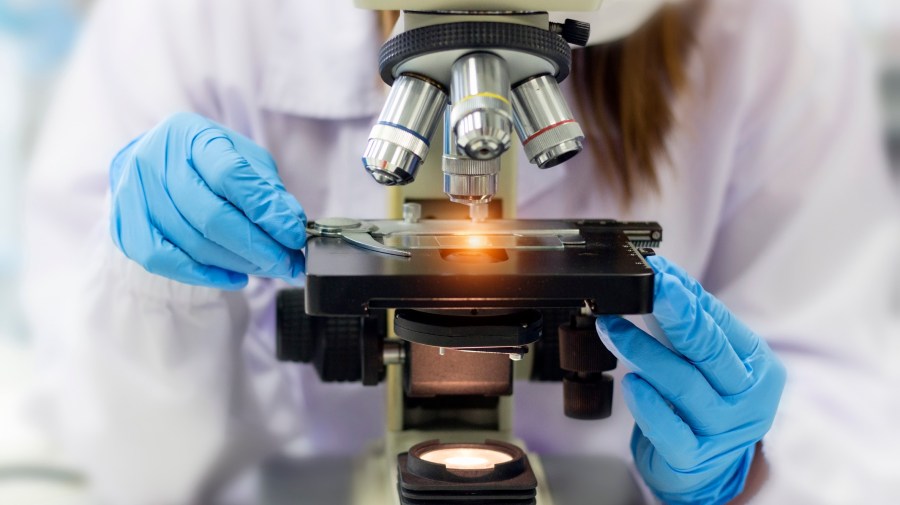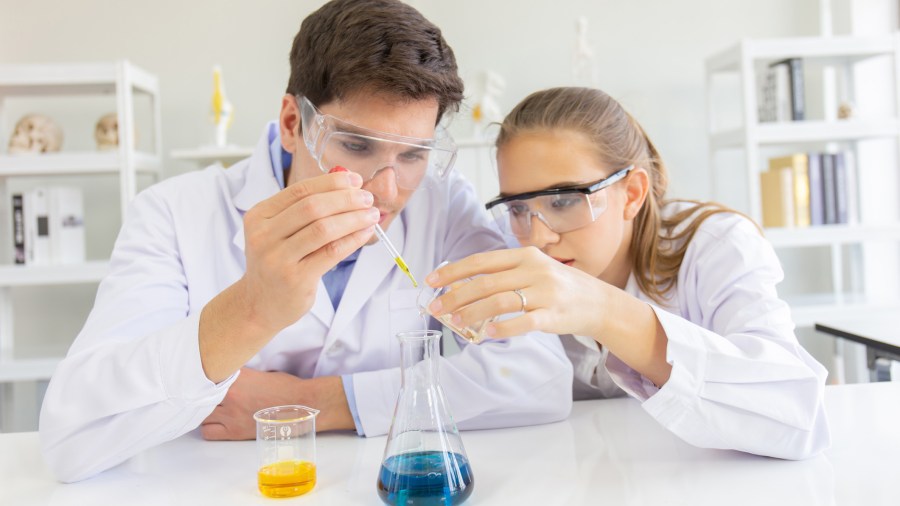How to Apply Scientific Method to Learning Martial Arts

If you've ever had a great idea for something new, and so y'all know some testing is necessary to work out the kinks and brand sure you lot go the desired consequence. When it comes to developing and testing hypotheses in the scientific world, researchers utilise an eight-step procedure known every bit the scientific method to bear witness or disprove ideas that could ultimately atomic number 82 to more than physical scientific theories.
Aristotle was the offset known person to suggest using ascertainment and experimentation to testify various hypotheses proposed by scientists, philosophers and mathematicians. Over time, his initial ideas were tweaked and improved until they evolved into what we know today as the scientific method. Before you tackle your next science experiment, let's take a expect at the steps you demand to include to validate your findings.
Observation (Steps One Through Four)
The steps that make upwardly the scientific method by and large fall into three phases: observation, experimentation and decision. The first four steps in scientific research all fall into the observation phase and include initial observations, asking questions, gathering information and forming hypotheses. The concept is uncomplicated: Before you lot can conduct whatever experiments, you must first discover something in nature that raises questions and prompts yous to consider new ideas or solutions to a trouble. In many cases, footstep 1 takes place without whatsoever conscious attempt on the part of the observer.

After observing something that catches your middle, yous may decide you want to know more most it, which requires y'all to ask a question. Example questions could relate to why something happens or what makes information technology occur. Asking a relevant question is the second stride in the scientific method.
Next, yous want to practice some inquiry to discover the respond to the question. For example, if you are wondering why plants answer to sunlight, you would want to thoroughly enquiry the topic of photosynthesis and perform your ain experiments to increase your understanding. The enquiry yous behave is the courage of step three. In some cases, you may detect evidence already exists to answer the question without any further endeavour on your part, but your own research could lead you in a new direction and expand on what you already know.
Once yous have fabricated an observation, asked a relevant question and carried out your own research, you tin can complete step four by developing a hypothesis based on everything yous learned. Think of a hypothesis as an educated estimate. It'due south based on what seems to be truthful based on preliminary bear witness, merely it hasn't been conclusively proven to exist truthful.
More Nearly a Hypothesis
The hypothesis is one of the cornerstones of the entire scientific method. It doesn't offering proof when first presented, but it does require researchers to analyze the limited evidence available and use audio logic and reasoning to describe potential conclusions. The actual statements are typically written in an if/so format, with scientists predicting the outcomes of hereafter experiments or the causes of particular events. They usually brand these predictions based on the results of their ain initial research.

Despite a mutual misconception, a hypothesis is not the same thing as a theory. If a hypothesis is tested, and the outcome is favorable — in other words, the scientist's initial educated guess was proven correct — then information technology could eventually get a much more physical theory. Typically, a hypothesis is tested several times and by unlike scientists before information technology tin can be classified as a theory. It'south too common for scientists to combine several dissimilar hypotheses to develop a single working theory.
Experimentation (Step Five)
Once the observation stage is consummate, things typically get a picayune more than hands-on in the experimentation phase. Equally the name would imply, this phase involves conducting tests designed to (hopefully) prove a hypothesis. At this point, scientists and researchers gather their research, their hypotheses and perchance even their imaginations and use it all to acquit experiments.

The types of experiments conducted could take many unlike forms. Some include simple observation of a subject, such as a human or an animate being, in their natural surroundings, while others are completely conducted in laboratories. In most cases, researchers will conduct the same experiments several times using different variables to endeavor to prove their ideas are valid.
Conclusion (Steps Six Through Eight)
Once all the official data has been collected and recorded, it's fourth dimension to initiate the conclusion phase by first analyzing all the data so forming a decision in step half dozen. If the analysis indicates the results are inconclusive, researchers may cull to repeat certain experiments or bear new ones.

If the results indicate a definite decision, then that conclusion is reported in step 7 to the scientific community and possibly the public. Depending on the blazon of experiment and the results, researchers may even publish the results and the data in a peer-reviewed medical periodical to ensure other researchers in the field are enlightened of the information.
Finally, the results of associated experiments and the decision drawn will continue to be evaluated (step 8) for potential modifications as new experiments are conducted and new prove emerges over time. This phase just stops if the conclusion is proven to be a scientific police force (doesn't change over time), such every bit Newton's laws of motion.
Source: https://www.reference.com/world-view/eight-steps-scientific-method-879574b02eaa700b?utm_content=params%3Ao%3D740005%26ad%3DdirN%26qo%3DserpIndex